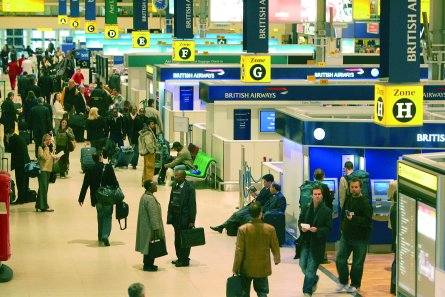Reviews of the UK Government’s 2003 long-term air transport policy have reaffirmed the strategy, which identified the need for additional runways to serve the southeast region at the London airports of Heathrow and Stansted.
The UK Government policy paper was published in December 2003 and outlined the UK’s future air transport requirements to 2030. Developments earmarked by the strategy included prioritising construction of a second runway at Stansted, to be built around 2011-12, and a third, short runway at Heathrow in the 2015-20 timeframe – contingent on the airport’s meeting air and noise quality limits.
Three years on the UK transport department has today published a progress report on the policy which, despite environmental concerns moving up the political agenda, sticks by the original assessments.
UK transport secretary Douglas Alexander says: “The Government reaffirms its commitment to the development of the aviation sector, predominantly through making the best use of existing capacity, and ensuring that where new capacity is required its provision is in line with our environmental obligations.”
He notes the increasing awareness, since the strategy was published in 2003, of the need for aviation to growth to be sustainable. “The Government has also recognised this as a priority,” he says. “The progress report confirms our intention that aviation should meet its climate-change costs and should limit noise and pollution at airports across the country.
“At the same time we must ensure that the UK has the airport capacity it needs to enhance its economic performance.”

The progress report was preceded by two major Government-commissioned reports, the Stern and Eddington reviews, setting out the economic impact of climate change and transport policy. The Eddington review concluded that the economic benefits of airport expansion at major gateways outweighed the economic cost of additional emissions.
Today’s review reiterates Government continued support for the development of a third runway at Heathrow, as soon as it is able meet the environmental requirements set out in the white paper. But the progress report makes no definitive conclusions on the environmental and operational cases for either the third runway or implementing mixed-mode operations at Heathrow – which would increase flights without an additional runway. These will come next year.
But it says: “Our provisional environmental assessment for mixed-mode operation suggests that the noise contour limit could be met if extra movements were phased in gradually as noisier aircraft were retired.”
It notes, however, that this would require ending some existing practices, including the Cranford Agreement which protects residents to the east of the northern runway; impacts of this need to be further assessed. Similarly the environmental assessments on which a third Heathrow runway decision will be based will not be completed until next spring.
“A full public consultation on the future development of Heathrow is planned for 2007, once the environmental assessment work is complete,” the report says. “The consultation will describe the mixed-mode and third runway proposals in detail and report on the predicted impacts of development, in particular against the noise and air quality limits.”
Click here to see London Heathrow runway chart
Airport operator BAA is expected to submit its planning application for a second runway at London Stansted in the second half of next year, but already acknowledges the runway will not be completed by its initial 2011-12 target. It notes a planning inquiry is unlikely to conclude before 2010, and BAA does not expect an additional runway to be operational before 2015.
Click here to see London Stansted runway chart
Today’s review also discloses plans for a new mechanism to help information decisions on major increases in aviation capacity, although details are limited at present.
“The Government intends to introduce a new emissions cost assessment, which will be an assessment of whether the aviation sector is meeting its external costs of climate change,” says Alexander. “This will inform ministers' decisions on major increases in aviation capacity. We intend to consult on this proposal next year.”
The Government will issue a further progress report in three to five years’ time.
Source: FlightGlobal.com



















